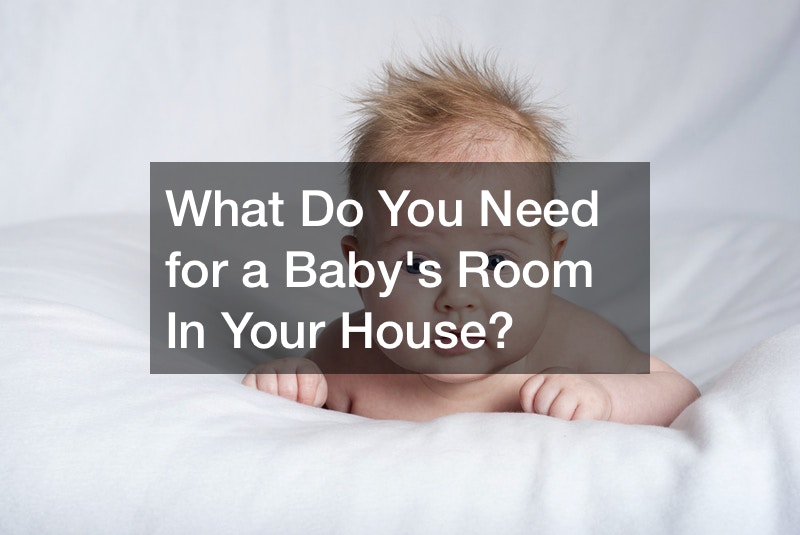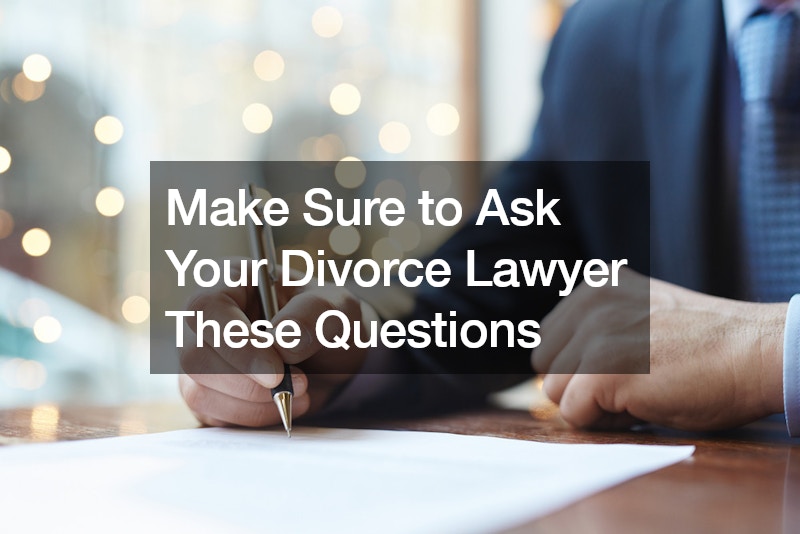
With a new family member on the way, parents tend to experience a mixture of emotions. On the one hand, you are excited about the bundle of joy on the way, and on the other, you are overwhelmed with all the preparations. Between making birthing plans, doctor’s appointments, lifestyle adjustments, and so on, you may wonder where to start. Here is a guide that can help you design the baby’s room, making it comfortable for the little bundle of joy and other family members.
Pick The Right Room For The Nursery
The first thing you need to do is decide the room where the baby’s nursery will go. If you have the option of several rooms in the house, then size can help you determine which one to go with. How much furniture do you plan to place in the room, and how much space will it take? If you do not put a lot of things besides a crib, a chair, and a baby drawer, you can go to the smaller room. Another factor to consider is how close the room is to yours. Proximity is important, especially for those late-night feedings or if the baby has trouble sleeping the whole night. Other people prefer a nursery far from the parent’s room to avoid disturbing other late people. It all depends on your preference.
On the other hand, if you do not have a spare bedroom, the alternative is setting up a nursery in the master bedroom. You will have to rearrange the bedroom to make space for the new baby. The most important thing is to factor in safety. For instance, the crib should be located away from heavy shelving units, windows, or electrical cords. You can also get an electrician to come and rewire the electrical lines if necessary. Do not forget to factor in the baby’s furniture’s space, as you do not want a cramped room. Even if you are not planning to share your bedroom with the child, pediatrics advises new parents to make space for their child in the master bedroom. Try and have at least one bassinet or cradle in the room for the first six months for safety reasons.
Decluttering And Cleaning
The next thing after choosing the nursery room is decluttering the room and cleaning. Decluttering is not that tiring, especially if you plan yourself early. Choose a day, weekend, or timeline for when you want the job to be done. This should be done in the early days of the pregnancy, where both parents still have a lot of time, and the mother is not that tired. Depending on how cluttered the room is, you can do this between 1 and 3 days.
The best way to declutter is by using a sorting-out system. For instance, if you are removing bigger items like furniture, set aside a large area for putting those items in. If it is small items, get about three storage items and label them as ‘keep in the room’, ‘put in storage’, and ‘get rid of’. You can then sort out items by placing them in boxes. Once you are done with the decluttering, clean the room thoroughly. Go with natural or gentle cleaning products. Harsh chemicals are not safe for the baby. When you are done with cleaning, you get a better picture of the work to be done, whether it is painting, adding shelves, changing the flooring, etc.
Designing The Nursery

Now that you are done with the boring bit involving the nursery, next comes the fun part. This is where you buy furniture, baby bedding, storage solutions, and basically anything else that involves organization. When creating a list of items to place in the nursery, here are a few basics that should be on the list:
- Crib, cradle, or bassinet
- Glider or rocking chair
- Clothing bins or dresser
- Toy bins
- Laundry hamper
- Lighting
- Diaper changing table
If you have limited funds, there is no need to worry that you will not give your baby a room. A clever budget-friendly tip when buying nursery furniture is to buy a 3-in-1 crib. It can be a toddler’s bed and a daybed, saving you the option of buying another bed later. You can visit a mattress shop and choose the right size to suit the crib. Also, you can upcycle an old dresser which doubles as a dresser and changing table. All it needs is a bit of polishing and repainting, and it will be as good as new. Always look at items in your home that you can recycle, then work with them
Storage
The next important bit is coming up with storage solutions. Depending on your budget, you can repurpose old storage space or purchase new storage solutions. Here are some great ideas to consider.
- Shelves: Buy shelving units and then visit power tool stores to get the equipment needed to install the shelf. Place them at various heights on the wall above the changing areas. It will make it easier for you to reach out for clean clothes when changing a child. Shelving units also make great storage spaces for toys and other supplies.
- Baskets, bins, and containers can also come in handy for storing the baby’s toys, clothes, towels, blankets, etc. To save some cash, look at any item at home you can repurpose as storage space before buying new items. If you are buying, go with clear sturdy units. They make locating items much easier and will last a long time.
Color Palette And Decor

Traditionally, new parents would paint pink for a girl’s room and blue for a boy’s room. There is nothing wrong with this idea if you like it. However, you can also be open to painting the room with gender-neutral palettes such as black, white, and bold, mint and navy, aqua, yellow and grey, aqua and yellow, or gold and grey. Contact custom interior painters and tell them what you want. They will help you achieve the theme you are going for. You can also forego house painters and get wallpaper with the theme you want.
Keep in mind that the color palette you choose needs to harmonize with the rest of the decor. You want a balanced room where everything blends in instead of looking out of place. Apart from the paint or the wallpaper, you could also add some bit of decor on the walls to make them less dull. For instance, you can hang some artwork to bring in a pop of color. Look for great artwork or even a fun picture, then frame it and use your picture hanging supplies to hang it up. You can also decorate the wall with decals that are easily removable as the child grows.
Air, Light, And Noise Control
One of the main goals of getting a nursery is to ensure your child is sleeping peacefully and on a schedule. Therefore, factor in how you can control the airflow in the nursery, minimize noise and block out light. Use thick drapes and pile rugs that can help absorb noise. To filter or control light, opt for blackout shades, curtains, or interior/ exterior shutters. Do not underestimate how important these are. Kids can be fussy when they are not getting quality and enough sleep. This means you also spend a lot of time trying to calm them down. To save parents and kids trouble, create an environment where they can sleep peacefully with minimum disruptions.
Organize The Nursery
As mentioned earlier, one of the things you need to consider when setting up a nursery is safety. Organize it in a way that focuses on safety. For instance, one of the best flooring to use for a baby’s nursery is epoxy flooring. It is smooth and durable. Also, place the changing table close to the baby’s sleeping area. Organizing the room properly ensures that the baby’s items do not pile and give you a hard time navigating the nursery. Therefore, in your preparation stages, invest in proper storage. Some brilliant ideas that can help you keep the room organized include:
- Using drawer dividers: A drawer divider will help you separate different clothing types. So you can have an area for socks, onesies, bibs, stockings, etc. It also makes it easy for you to retrieve clothing items whenever you are changing the baby.
- Use containers: You can place about three containers in the closet then label them. One can be for outgoing clothes, another for keepsakes, and the last for clothes you want to save. Keep in mind that children grow up pretty fast and soon, some of these clothes will be too small for them. So if, for instance, you are not planning to have another child, the outgoing clothes can be donated to charity as long as they are still in good shape. For whatever you are keeping for the next baby, once the container is full, you can put it in an attic or basement.
- Hanging storage shelves: When you have a small space, you can maximize storage by using hanging storage shelves. They are affordable and quite a good investment. That is because even as the baby grows, the shelves will still help stay organized.
Create Space For The Baby In Other Rooms

Apart from the nursery or the master bedroom, other parts of the house also need to be prepared to accommodate the child. That means cleaning up the house, ensuring the house is safe and having enough roof for the child. Now is also a good time to inspect your home for any damage. For instance, if the roof has been leaking or has cracks, contact a roofing contractor to come and fix it. A leaking roof can lead to the growth of mold or mildew, which is not safe. A few things to create space for include:
- Closets: diaper bags and strollers
- Living room: bouncy chairs, playpens, toys
- Bathroom: toys, baby tub, shampoo, toothbrush, lotion, medicine, and conditioner
- Kitchen: Silverware, bottles, plates, cups. High chairs, bibs, and food.
If you are unsure what you should keep and what to get rid of in every room, do not worry about it. Simply picture your life after the baby arrives. You can start by looking at your hobbies. Those tennis rackets, scrapbooks, or golf clubs are taking up space in your closet. However, when the baby comes, do you feel like you will have time for those activities? While a baby does not mean you have to drop your hobbies, you may have to put them on hold for the first few months as you adjust to your new life. Therefore, create space by putting these items in storage in the basement or attic until you have more time on your hands.
Babyproof The House

The last thing you need to do is babyproof the house to reduce the risk of accidents. Children are curious beings, so that means they will be crawling or walking around the house trying to touch anything on their way. It is important to ensure that there is nothing hazardous on the way. Start by installing safety locks on all cabinets within the child’s reach. This could be under the sinks or counters in the kitchen and bathroom. The last thing you want is for your child to open a cabinet with cleaning supplies and put something dangerous in the mouth.
Get child-safe covers to ensure that your child does not put their fingers into sockets. This should be done in every room the child will have access to. As for the stairs, you will need baby gates. The moment your child starts walking or crawling and you have stairs in your home, they will try to either go down or up. Put a barrier using baby gates to ensure they do not wander away. Finally, anchor all your furniture in the nursery to ensure nothing trips over.
With these simple tips, your baby’s nursery and home are safe to accommodate your baby on the way. The most important thing to keep in mind is that safety should be your top priority as much as you are going for aesthetics. Also, do not be anxious about doing everything at once. This process takes a while, and you can adjust depending on you and your baby’s needs.



